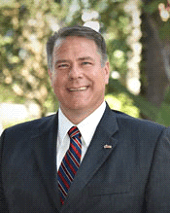What Exactly is a Law Enforcement Liaison?
Tim Burrows manages the National Law Enforcement Liaison Program for the Governors Highway Safety Association. His role is to support the nation’s Law Enforcement Liaisons (LELs), who work for State Highway Safety Offices (SHSOs) to promote law enforcement agency engagement in traffic safety activities at the state and local levels.
The National Law Enforcement Liaison Program (NLELP) was established by the National Highway Traffic Safety Administration and the Governors Highway Safety Association. to enhance communications between law enforcement liaisons (LEL), promote coordination of LEL activities across the country, offer and support LEL continuing education through trainings and workshops and provide technical assistance. But what is a Law Enforcement Liaison and what do they do?”
LELs are a vital link between the State Highway Safety Offices (SHSOs), which are tasked with addressing behavioral safety issues – speeding, impaired and distracted driving, lack of seat belt use – that put road users at risk, and the police officers responsible for enforcing local and state traffic safety laws. LELs help promote and enhance state and national highway safety programs, initiatives and campaigns and perform a myriad of functions, including planning, organizing, networking, promoting, recruiting, implementing, reporting and evaluating law enforcement’s activities conducted in support a SHSO’s highway safety program.
I am honored to manage the National LEL Program and to work with the nearly 300 LELs, who represent every state and several of the territories. These dedicated men and women come from different backgrounds, but all are committed to public safety and service. Many are retired law enforcement professionals, but some are active-duty law enforcement professionals. Each performs their LEL duties on a contractual basis, as part of their police activities or through a grant from the SHSO. Each state or territory determines the role of their respective LEL. In one state, an LEL may provide grant review and assistance, while training may be the LEL’s primary focus in another state. This diversity makes for robust communication between the LELs who are always interested in learning about new strategies and best practices that will help them advance their respective SHSO’s priorities.
One of an LEL’s most important tasks is to recruit and encourage state and local law enforcement participation in national and state traffic safety mobilizations. Right now, many state and local law enforcement agencies are supporting the national Click It. Or Ticket. campaign. LELs not only work to bolster law enforcement’s participation, but many also help police departments with resource planning and allocation, public outreach, data collection and other important tasks. Law enforcement’s involvement in this and other national mobilizations such as the Drive Sober or Get Pulled Over campaign conducted during the July 4th, Labor Day and winter holiday period are vital. But LELs also work to promote a culture of sustained and equitable traffic enforcement year-round.
As the National LEL Program Manager, I invite you to reach out to me to learn more about the work of the LELs and how you can connect with the LEL in your state. We all share a common goal of zero fatalities on our nation’s roadways and are most effective when we work together.






